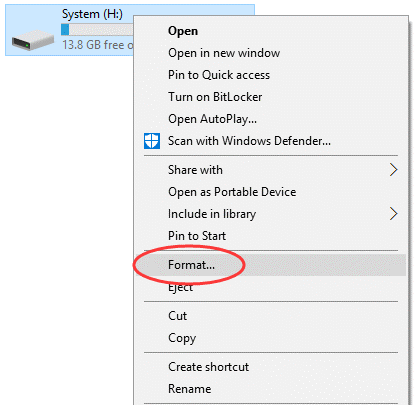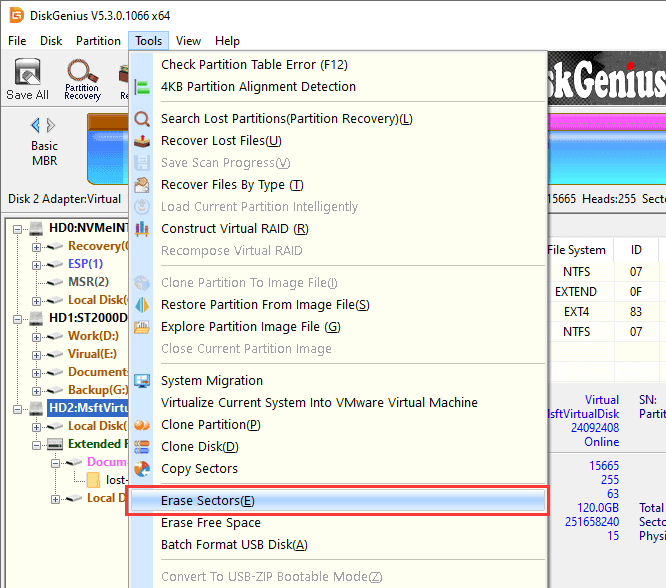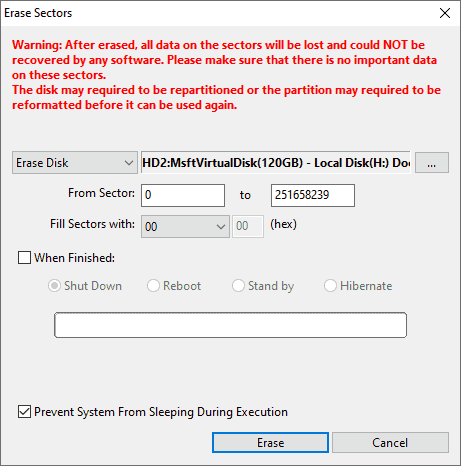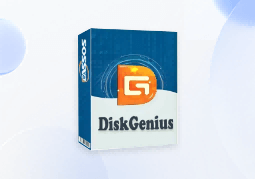Position: Resource - Disk Utilities - How to Erase a Thumb Drive: Step-by-Step Guide
• Data Security: If you're getting rid of your thumb drive, erasing it is crucial to protect your sensitive data. Even if you've deleted files from the drive, they can often be recovered using data recovery software. By properly erasing the drive, you can prevent unauthorized access to your personal, financial, or business information.
• Repairing a Corrupted Drive: Thumb drives can sometimes become corrupted due to various issues such as improper ejection, virus infections, or hardware problems. Formatting (a type of erasure) can often fix these issues by clearing the existing file system and creating a new, clean one.
• Preparing for Reuse: When you want to use the thumb drive for a different purpose or with a different operating system, erasing it and choosing the appropriate file system can optimize its performance and compatibility.
• Backup Your Data: Before you start the erasing process, make sure to back up any important files on the thumb drive. Once erased, the data will be permanently lost, and recovery may be difficult or impossible. You can copy the files to another storage device, such as an external hard drive, or use cloud storage services.
• Check for Write Protection: Some thumb drives have a physical write - protection switch. Ensure that this switch is in the unlocked position if you want to be able to erase the drive. If the drive is write-protected, you won't be able to perform the erasing operation.
• Identify the Correct Drive: It's essential to correctly identify the thumb drive you want to erase. Accidentally erasing the wrong drive can lead to significant data loss. Pay attention to the drive letter and the capacity of the drive to ensure you've selected the right one.
Best for: General use, non-sensitive data
1. Insert the thumb drive into a USB port.
2. Open File Explorer (press Win + E).
3. Right-click the drive and select Format.

4. Choose a File System:
-FAT32 (best compatibility)
-NTFS (for large files & Windows-only use)
-exFAT (for large files & cross-platform)
5. Check "Quick Format" (uncheck for a slower full format).
6. Click Start → OK to confirm.
Warning: Quick formatting doesn't securely erase data, files can still be recovered with tools like DiskGenius. If you want to completely wipe data, then unselect the option.

Best for: Fixing corrupted drives or removing partitions.
1. Press Win + X → Select "Disk Management".
2. Locate your thumb drive (check capacity to avoid mistakes).
3. Right-click the partition → "Delete Volume".
4. Right-click the unallocated space → "New Simple Volume".
5. Follow the wizard to:
Set partition size (default = full drive)
Assign a drive letter
Choose a file system (FAT32/NTFS/exFAT)
6. Click "Finish" to complete the format.
Warning: This method removes all partitions, useful if the drive has errors.
We recommend you to use the secure disk erase tool - DiskGenius. DiskGenius supports the function of erasing sectors, which can permanently erase the data on any partition or disk sector by sector. Any data recovery software cannot recover the files erased by this function. The erased sectors can be filled with 00, FF, random data or user-specified characters.
Step 1. Click "Tools" menu and select "Erase Sectors" option as follows, and the Erase Sector window shows up.

Step 2. In the Erase Sectors window you need to set following options:
1. Select the thumb drive you want to erase data.
2. Set sector range to be wiped. If you want to wipe a partition, sectors here mean the partition range.
3. Choose characters to fill sectors.

Step 3. Click Erase button on Erase Sector window and DiskGenius pops up a message box:

Click Erase and OK button to confirm operations to be done and DiskGenius starts to erase data on selected disk space.

Tips
✔ Back up important files before erasing.
✔ For maximum security, use professional tools like DiskGenius.
✔ If the drive is physically damaged, consider destroying it.
1. Will erasing a thumb drive affect its lifespan?
Frequent formatting will slightly affect the lifespan of a thumb drive (flash memory has a limited number of writes).
But there is no need to worry about normal use, as modern thumb drives can withstand thousands of writes.
2. How to recover accidentally deleted thumb drive data?
Use data recovery software (such as DiskGenius, CuteRecovery).
The premise is that it has not been overwritten by new data, so stop using the thumb drive immediately after discovering the accidental deletion.
3. Why does the thumb drive not appear on the computer?
Check the thumb drive interface or change the computer for testing.
Check in Disk Management (Windows) or Disk Utility (macOS) whether it is recognized but not assigned a drive letter.
It may be a driver problem, try reinstalling the drive driver.
In this comprehensive guide, you can effectively wipe a thumb drive and prepare it for new data. In addition, we address potential issues and provide other FAQs and tips to ensure the wipe process goes smoothly. Always remember to back up important data before wiping and verify the functionality of the thumb drive after wiping. With these steps and considerations, you can confidently manage your thumb drive storage and keep your data organized.

DiskGenius is a one-stop solution to recover lost data, manage partitions, and back up data in Windows.
Download